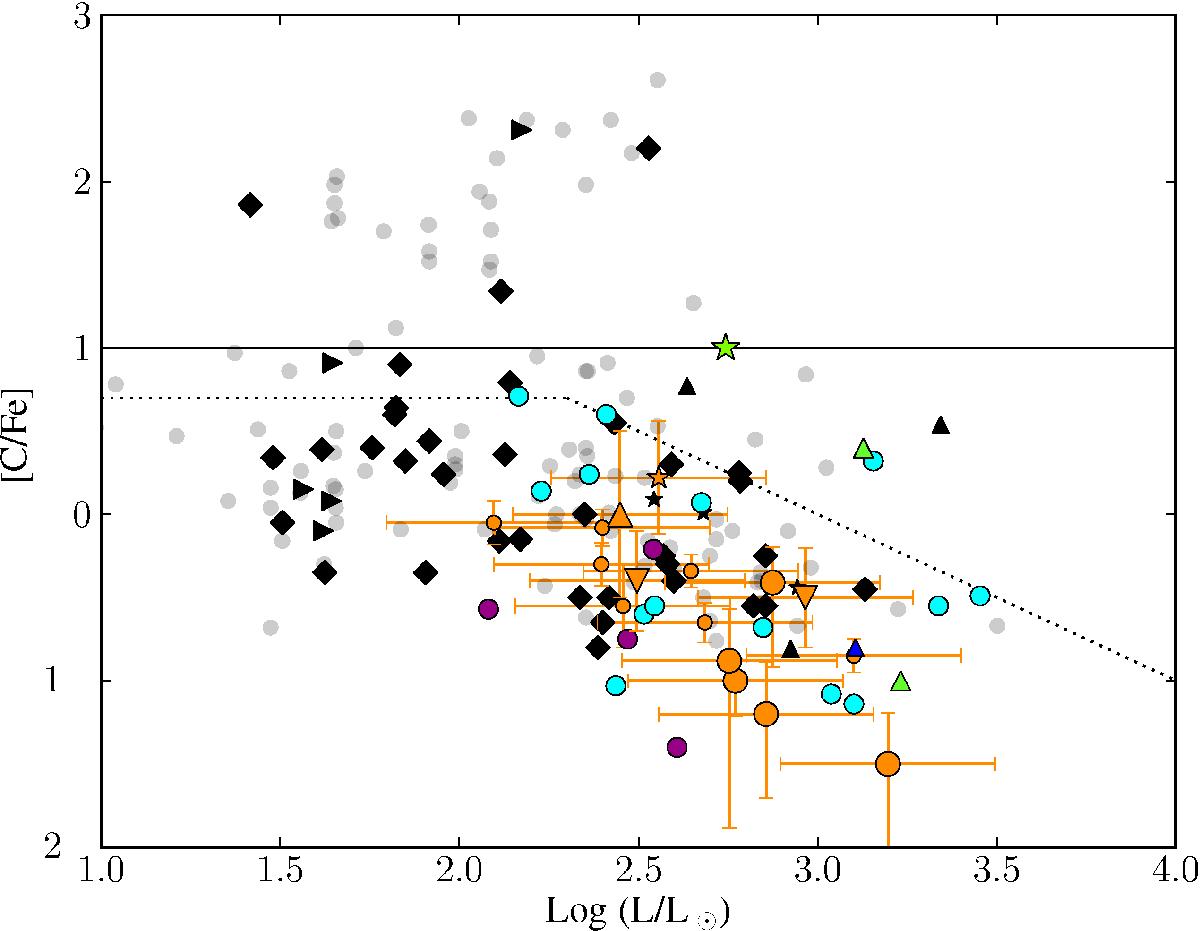Fig. 7

Relation between [C/Fe] and the luminosity of the very metal-poor RGB stars selected as Teff< 5300 Å and [Fe/H] < −2.5. The dotted line corresponds to the limits of Aoki et al. (2007) distinguishing between carbon-rich and normal population. The green colour identifies the EMPS in Sextans with a stellar symbol for the analysis of Honda et al. (2011), and with upright triangles for the Tafelmeyer et al. (2010) sample. The blue triangle identifies Fornax (Tafelmeyer et al. 2010). The cyan circles show the observations in Draco by Shetrone et al. (2013) and Kirby et al. (2015), while the point above the dotted line is the carbon-rich RGB found by Cohen & Huang (2009) in this galaxy. The observations of Kirby et al. (2015) in Ursa Minor are shown in purple. The references of the other comparisons samples are given in Sect. 5.1. The Milky Way halo stars are shown in grey. The Sculptor stars are seen in orange. The errors on their luminosities are calculated for a 100 K uncertainty in Teff . The ultra−faint dwarf spheroidal galaxies are indicated with black symbols. Ursa Major II is identified with upright triangles, Coma Berenices with stars, Leo IV with squares, Hercules with pointing down triangles, Segue I with pointing right triangles, and Boötes with diamonds.
Current usage metrics show cumulative count of Article Views (full-text article views including HTML views, PDF and ePub downloads, according to the available data) and Abstracts Views on Vision4Press platform.
Data correspond to usage on the plateform after 2015. The current usage metrics is available 48-96 hours after online publication and is updated daily on week days.
Initial download of the metrics may take a while.


